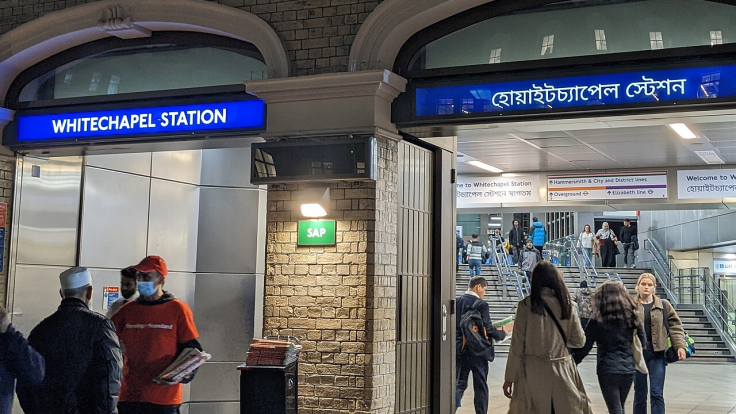Whitechapel's Bengali Signs Spark Outcry Over Multiculturalism in London
Whitechapel's Bengali signage highlights London's diversity but has become a flashpoint in wider cultural debates.

Whitechapel, a vibrant East London neighbourhood, exemplifies the city's rich tapestry of cultures but also highlights ongoing tensions around identity and integration. The Bengali-language signs at Whitechapel Station, installed to commemorate Bangladesh Independence Day in 2022, has reignited debates over multiculturalism, belonging, and Britain's changing face.
Whitechapel is home to one of the UK's largest Muslim populations. Recent census data shows over 40% of residents identify as Bangladeshi, with more than half as Muslim—making it a key centre of Bangladeshi and Muslim life. This visibility has also made the area a target for right-wing rhetoric, as nationalist sentiments enter mainstream discourse.
The History of Whitechapel: A Neighbourhood of Migrants
Long defined by migration and diversity, Whitechapel grew around the 14th-century St Mary Matfelon chapel. Situated just outside London's old city wall, it became home to travellers, traders, and rural workers.
In the 17th century, persecuted French Protestants (Huguenots) were among the first major immigrant groups. Over time, Jewish and Irish communities arrived, transforming Whitechapel into a densely populated, culturally vibrant district by the 19th century.
Bengali migration traces back to the 17th century, when lascars—South Asian seamen employed by the British East India Company—first arrived. The most significant wave was post-1950s, following Bangladesh's independence, when many families settled there. Since then, the Bengali community has become central to Whitechapel's identity, shaping its culture and politics.
Origins of Whitechapel Station's Bengali Sign
The Bengali signs at Whitechapel Station were installed in March 2022 to mark Bangladesh Independence Day (26 March). Led by Tower Hamlets Council and Transport for London, the initiative followed local calls, including from Councillor Abdal Ullah, to recognize the area's Bangladeshi roots. The signs aimed to honor community contributions, not replace English.
Online Response and Critique
The bilingual sign celebrated cultural pride and migration's role in shaping Whitechapel. However, it sparked online debate. A viral post by a X user @London_W4 showed only the Bengali part of the sign, captioned: 'It says Whitechapel Station. Apparently.' This triggered thousands of comments about changing signs or losing English culture. Many defended the signs as a tribute to the community.
Some critics pointed out more obvious issues—for example, a homeless man visible in the photo. User @fiona_lali remarked: 'What stood out to me was the man begging. London is the 6th richest city, and you take this photo to complain about a sign?'
It says Whitechapel Station. Apparently pic.twitter.com/g8oSITjlG1
— Alastair Hilton (@London_W4) November 2, 2025
Far-Right Rhetoric and the Politics of Belonging
This wave of online backlash against Whitechapel's Bengali signage comes in the shadow of earlier far-right targeting of the neighbourhood. In September, the UK Independence Party (UKIP) announced plans for a so-called 'crusade' to 'reclaim Whitechapel from the Islamists,' framing the area's Muslim identity as a threat to British values. Although the march was ultimately cancelled, local residents and activists organised a counter-protest to assert solidarity and reject the inflammatory rhetoric. The response drew further outrage from right-wing commentators, including Nigel Farage, who described the demonstration as resembling a 'foreign invasion'.
The criticism of the bilingual signs reflects longer patterns of hostility towards multicultural expression in areas with significant immigrant and Muslim populations.
A Deeper Reflection on Britain's Multicultural Identity
Ultimately, the controversy over the Bengali signage reveals deeper anxieties about national identity. What was initially a local gesture celebrating a community that reshaped East London has been framed by some as a threat to cohesion. For many residents, however, the signs are a simple affirmation of visibility in a city built on migration and layered histories.
The debate over a few words in Bengali underscores Britain's ongoing challenge: reconciling its diversity with its self-image. It's less about the sign itself and more about tensions around belonging and cultural identity.
© Copyright IBTimes 2025. All rights reserved.





















